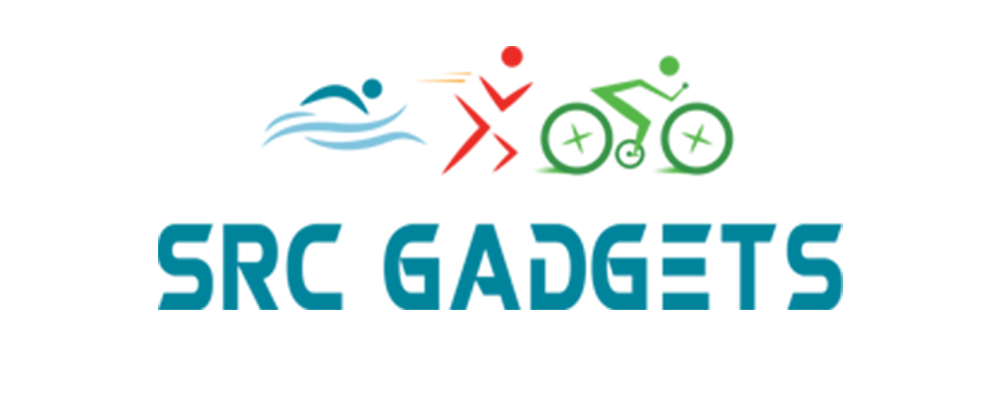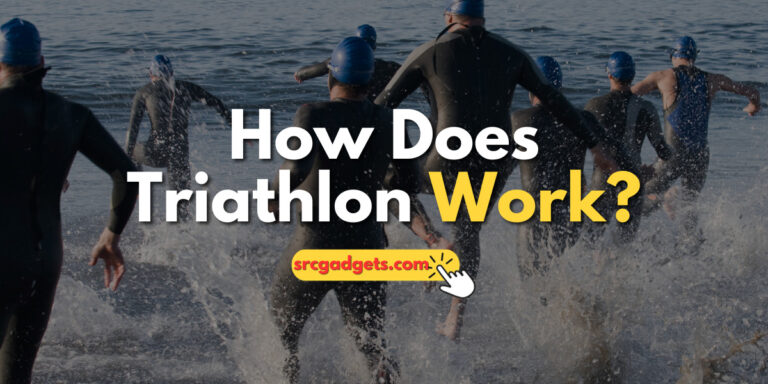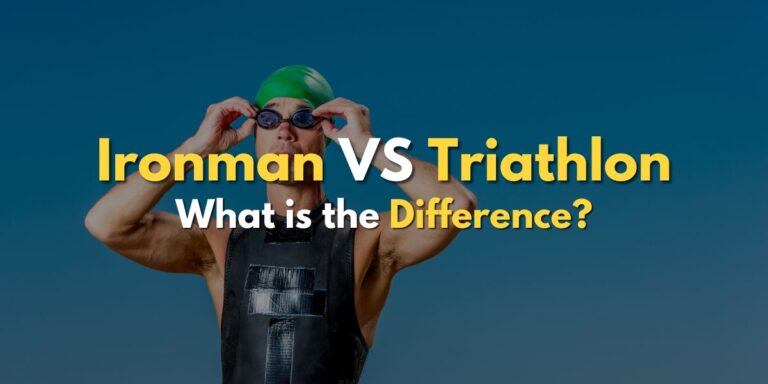Can You Use a Snorkel in Triathlon Swim – Rules & Tips
As triathlons continue to gain popularity, both novice and experienced athletes often grapple with the nuances of the sport’s rules and equipment choices.
One question that consistently pops up among triathletes pertains to the swim leg: “Can you use a snorkel during a triathlon swim?” The short answer is yes but with stipulations.
The triathlon governing bodies, in most jurisdictions, allow the use of snorkels. However, certain conditions and restrictions apply, which we’ll delve into in this comprehensive piece.
Drawing from firsthand experience, extensive research, and the latest guidelines, this blog post aims to provide clarity and guidance on the subject.
Whether you’re a seasoned triathlete or a beginner gearing up for your first race, understanding the role of snorkels in triathlons can give you an edge and ensure you’re fully prepared for the big day.
Is Using a Snorkel Legal in a Triathlon?
It depends on the rules of the specific triathlon event you are participating in. Some triathlon organizations, such as the World Triathlon Corporation (WTC), which runs the Ironman series of races, explicitly ban snorkels from their events. Other organizations, such as USA Triathlon (USAT), allow snorkels as long as they do not have any valves or sumps that could provide an unfair advantage. However, even if snorkels are allowed by the rules, you may still face some disadvantages or challenges when using them in a triathlon swim, as we will discuss later.
What Kind of Snorkel Should I Use in a Triathlon?
If you decide to use a snorkel in a triathlon swim, you should choose one that is designed for swimming, not for snorkeling. Swimming snorkels are usually mounted on the front of your head rather than on the side and have a smaller diameter and a more streamlined shape.
They also have a purge valve at the bottom that allows you to expel any water that may enter the tube. Some examples of swimming snorkels are the Finis Swimmer s Snorkel and the TYR Ultralite Snorkel 2.0.
Will a Snorkel Restrict Your Breathing?
One of the benefits of using a snorkel is that it allows you to focus on your swimming technique without worrying about your breathing rhythm. However, this also means that you have to breathe through a tube that may restrict your airflow and increase your breathing resistance.
This can make you feel more fatigued and lower your oxygen intake. To overcome this challenge, you need to train with a snorkel regularly and adapt your breathing to the snorkel.
You might also consider using a snorkel that has an adjustable airflow restrictor. This feature allows you to regulate the amount of air you inhale and exhale through the tube.
Will Water Get Inside a Snorkel During a Triathlon?
Another challenge of using a snorkel in a triathlon swim is that water may get inside your snorkel due to waves, splashes, or turns. This can cause you to choke, cough, or panic if you inhale water instead of air. To prevent this from happening, you need to learn how to clear your snorkel of water by forcefully blowing out all of your air through the tube. You also need to be patient and not inhale too quickly after clearing your snorkel. You may want to practice this skill in shallow water before attempting it in open water.
Do I Need a Nose Clip?
Some people prefer to use a nose clip when using a snorkel, while others do not. The main reason to use a nose clip is to prevent water from entering your nose and causing discomfort or irritation. When using a snorkel, some people prefer to breathe through their mouth and nose simultaneously. This is a matter of personal preference and comfort, and you should experiment with both options and see what works best for you.
How to Get Used to a Snorkel While Swimming?
Using a snorkel while swimming can be a valuable tool for improving your swimming skills, but it can also be a difficult skill to master. Here are some tips on how to get used to a snorkel while swimming:
Using a snorkel during a triathlon swim can benefit some but pose challenges and risks to others. Before deciding to use one, ensure you understand the event rules, select an appropriate snorkel, practice with it often, and anticipate any potential issues.
Tips for Using a Snorkel During the Triathlon Swim
When it comes to the triathlon swim, using a snorkel can be a game-changer. You can also focus on your stroke and breathing without having to turn your head to the side, which helps improve your technique. If you’re new to using a snorkel during the triathlon swim, here are a few tips to help you make the most of this training tool.
1. Choose the Right Snorkel
There are various types of snorkels available in the market, so it’s essential to choose one that suits your needs. Look for a snorkel specifically designed for swimming, with features like a comfortable mouthpiece, adjustable head strap, and a purge valve to clear any water that enters the tube.
2. Practice Proper Technique
Using a snorkel requires a slightly different technique compared to regular swimming. Start by ensuring that the snorkel is securely attached to your head and adjusted to a comfortable position. During the swim, maintain a relaxed body position and keep your head in line with your spine. This will help you to maintain a streamlined position and reduce drag in the water.
3. Focus on Breathing
One of the main advantages of using a snorkel is that it allows you to focus solely on your breathing technique. Practice taking deep, steady breaths through the snorkel, inhaling and exhaling fully. This will help you develop a smooth breathing rhythm and increase your lung capacity over time.
4. Develop Bilateral Breathing
While using a snorkel eliminates the need for bilateral breathing, it’s still beneficial to practice it during your training sessions. Incorporating bilateral breathing into your swimming routine will help you develop a balanced stroke and improve your overall swim technique. It also prepares you for situations where using a snorkel may not be allowed, such as during open water races.
5. Gradually Increase Difficulty
The more comfortable you become with using a snorkel, the more challenging it becomes. Start by incorporating drills that focus on specific aspects of your swim technique, such as body rotation, kick, or arm stroke. You can also try swimming longer distances or increasing your pace while using the snorkel to improve your endurance and speed.
6. Use it Sparingly
While using a snorkel can be an excellent training tool, it’s important not to rely on it too heavily. It’s recommended to use the snorkel during specific training sessions or drills to work on specific aspects of your swim technique. Incorporate regular swim sessions without the snorkel to maintain a well-rounded training program.
Conclusion
In conclusion, you can use a snorkel during the swim portion of a triathlon, but there are some important factors to consider. The rules on snorkel usage vary between different triathlon governing bodies – some allow them, while others explicitly prohibit them. If snorkels are permitted, choose one designed for lap swimming rather than snorkeling, as it will have a more hydrodynamic shape.
Practice using the snorkel regularly to adapt your breathing, and be prepared for potential water intake issues. Consider whether a nose clip makes you more comfortable. While a snorkel can help you focus on stroke technique, also train without it to maintain versatility. Use it sparingly rather than over-relying on it. With the right preparation and execution, a snorkel can provide some benefits during the triathlon swim, but it also comes with tradeoffs to weigh against your own swimming style and preferences.
Frequently Asked Questions
Are there any potential downsides to using a snorkel in a triathlon?
Yes, it can sometimes cause drag, and there’s a risk of water entering the snorkel, especially in choppy conditions.
Does using a snorkel provide any competitive advantage in a triathlon?
While it can improve technique and breathing, it doesn’t necessarily provide a significant competitive advantage in terms of speed.
How do triathletes train to transition from snorkel swimming to regular swimming during a race?
Triathletes practice alternating between snorkel and non-snorkel sessions, focusing on maintaining consistent technique and breathing patterns.



